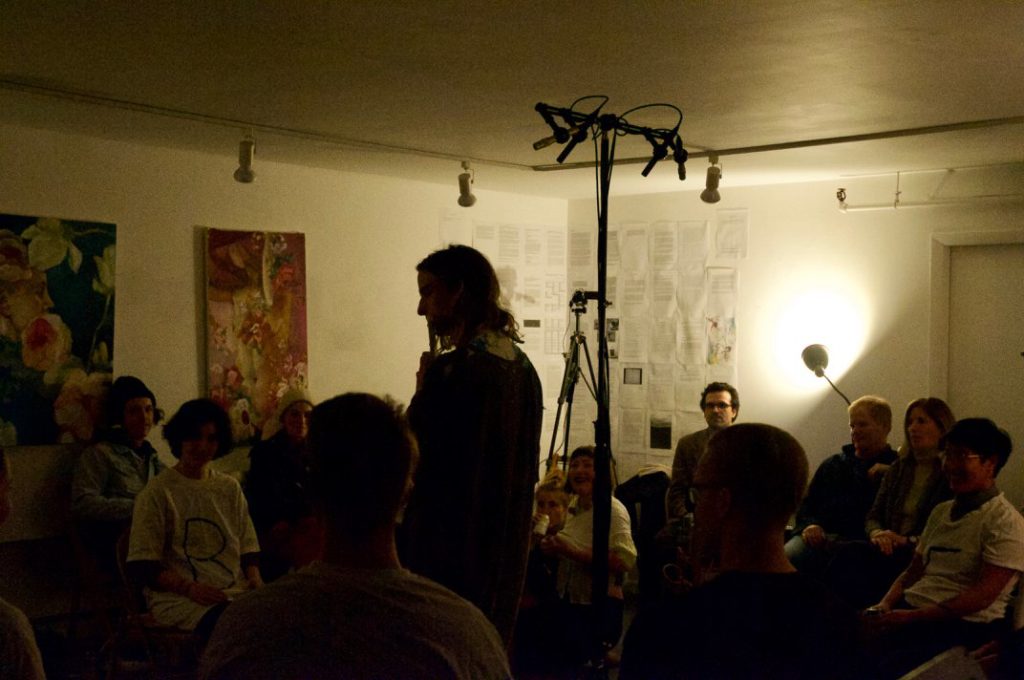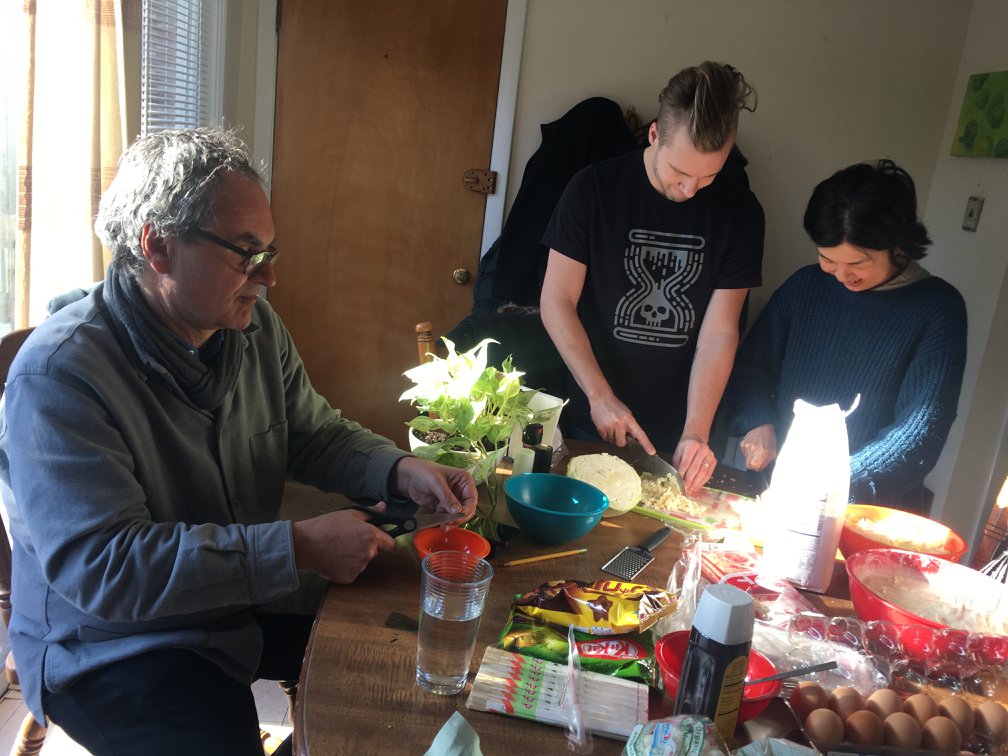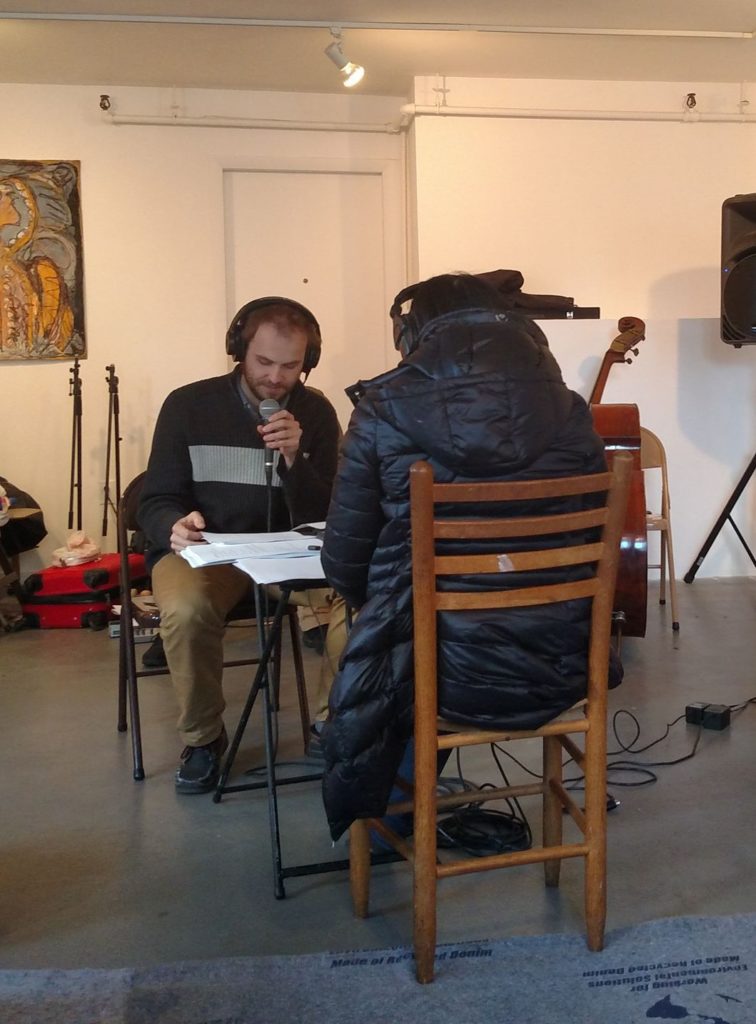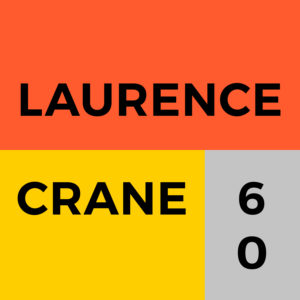1.2 1.3 | 2.1 2.2 2.3 2.4 2.5 | 3.1 3.2 3.3 3.4 | 4.1 4.2 | 5.1 5.2 5.3 5.4 | 6.1 6.2 6.3
A Laurence Crane Tribute Playlist
In my earliest encounters with Laurence Crane’s music I started asking, how can it be so simple? How can he get away with this? How is it so beautiful? I’m still asking those questions, and there are others as well. After hearing the first Piano Quintet: What just happened, and how can the most basic materials of music be so outrageous? On hearing and then playing Come back to the old specimen cabinet John Vigani, John Vigani, how do plastic bags and tin cans sound so perfectly attuned with a cello? Who else would even bother to try that? There’s a boldness in this work that can only appear to be naïveté on first or second glance. On realizing how well these pieces work, one after another, alchemy and evil genius come to mind but do not explain how they land, how they feel. All I really know is that they come through as gifts, made with great care by someone who has unique modes of understanding and expression.
When I think of this work, I smile. And I’m not the only one. The Festival of Laurence Crane is described as “a community effort, an extended party made possible by several individuals keen to celebrate the man and his music.” It came to light during the festival preparations that a number of people have recently written pieces or created programs that are inspired by his work. With the help of festival organizers Juliet Fraser and Christian Drew as well as the contributors, the playlist follows. From there, read on for an exchange with the two of them about the festival.
If you have a tribute that you’d like to add to this collection, please be in touch, either with me or with the festival organizers.
“Ham is a space-face spaced out homage to the first great ape in Space, Ham, named after the Holloman Aeromedical Laboratory, who safely returned from Space in January 1961.
“he had a smile on his face —
but,” said the experts,
“that’s a sign of great distress,
that’s a sign of great distress”
Dedicated to Laurence Crane on his birthday.”
Stephen Chase: machinealongwitharmformovingweights
“This piece came out of nowhere, I’m not sure what it is. Laurence’s music struck me from the first time I heard Riis (about 25 years ago!). It continues to strike me (softly but surely) in different ways, a notable time being when I page turned for Philip Thomas at the premiere of Ethiopian Distance Runners: the feeling of leaving the side of the road and setting off towards the horizon like one of those early driving/running track games setting a pace, towards something both familiar and unknown.”
“A few of the chords in Willow Hymn are taken from Radiohead’s Idioteque after I recently heard the song mashed up with Eiffel 65’s Blue.”
Sam Gooderham: Mark E. Smith in the Cold
“When I first met Laurence I was obsessing over the idea of slowing down a song by the Cure and “doing something” with it. I still haven’t figured that one out, but to commemorate the times I spent rambling about that and other tangents during lessons with Laurence, it appears here alongside Mark E. Smith reading out some 2005 League Two scores (including a crushing defeat for Oxford United at the hands of Carlisle).”
Matthew King: Neon, Glass and Ashes, played by Matthew King, piano
“Neon, Glass and Ashes is a single movement piano sonata for left hand. The piece was written as the result of a creative game: I asked Laurence Crane for five compositional instructions and he kindly obliged, specifying that it had to be 1) monodic, 2) within a specific range, 3) contain specific pedalling, 4) have a tempo change and 5) derive material from pop/rock music when I was a teenager.
All five instructions were implemented. The three ‘subjects’ of the sonata are (as per Laurence’s instructions) ‘derived’ from three songs of the late 1970s: Ashes to Ashes by David Bowie, Heart of Glass by Blondie, and Neon Lights by Kraftwerk.”
Matthew Lee Knowles: Piano, for Laurence Crane (2008), played by Kate Ledger, piano
“Laurence’s music has long been important to me and in 2008 I wrote Piano, for Laurence Crane, a twenty-one page score for solo piano that uses only four bass notes: Bb, C, D and F. It hasn’t yet been performed.”
Sam Meredith: The Crane
“The title of this piece references the species of bird but it is also a (not-so-subtle) nod to the man himself whose music for piano (and in general) has inspired me with some confidence to write my own. In ancient Japanese culture, cranes were thought to live for a thousand years, and it was this timelessness which I sought to represent in the stasis; something eternal.”
Christian Drew: Bobby D
“The title is an accidental pun on Laurence’s Bobby J for electric guitar. I was chatting with Patrick Hegarty about putting the piece together and told him we might both have to muster up our best Bobby D impressions (aka Bob Dylan).”
Cassandra Miller: Humming with Laurence
Ian Power: Buoy (2015/16)
performance video / score video / Soundcloud / Bandcamp
“In 2014 I fell in love with Crane’s The Swim, an organ piece written for a film in the early nineties. It is one of those pieces that at first blush sounds like there is all manner of electronic manipulation going on, but, upon closer inspection, is contained in the diligent execution of a straightforward score for a spirited instrument. Soon after, I composed BUOY.”
Alex Nikiporenko: Piano Piece for Laurence Crane’s Birthday
“This short piece started with a discovery that if you assign letters of the alphabet to A natural minor scale, surname CRANE would result in a suitably Crane-y chord, that can be heard at the beginning and the end of the piece. The rest of the piece is created from letters in LAURENCE CRANE converted into a chord row using another process.”
Alice Purton: one-eighth-plus (minus-plus-minus)
“I was practising the cello part for Plus Minus’ upcoming performance of Laurence Crane’s ‘Octet’ and singing in all my cues, when I suddenly thought I could record a bit for this playlist. Here is a rough and unedited improvisation with myself, based on Laurence’s cello part and my memories of the rest of the piece (extra halo provided by my very dodgy XLR cable).”
“(I saw Laurence Crane at a Michael Snow film once.
This piece is inspired by that, and some other things.)
“in one passage of negative reversal, the pools of shadow…are reversed to white,
and transformed into accumulations of something bright but material, as if dust had become snow”
— Elizabeth Legge (Michael Snow: Wavelength)
waves: light, long, sine, sound, form; before and after
lines: rising, falling, tracing, tying knots in; drawing lines and following them
— in the sand, bleached, grainy warm, white”
Two pieces selected and played by Antoine Veillerette, piano
Domenico Scarlatti: Keyboard Sonata in D minor, Kk. 77
Laurence Crane: 20th Century Music
“The decision to couple Laurence’s music with Scarlatti was almost instinctive to me. Both composers write music that manages to remain fresh and which always has a distinctive colour to it.”
Tell us about the Festival of Laurence Crane.
Juliet Fraser: The idea began over two years ago: I had decided to commission a piece from Laurence and when copying his biography into a funding application I realised that 2021 would be his fiftieth-birthday year! Originally the idea was to have a festival of events running over, say, a 10-day period but the pandemic put paid to that as planning with any confidence became so difficult and partner organisations became so tentative. We have ended up with something a little messy and sprawling, but perhaps pleasingly unorthodox and anti-establishment. At the heart of the whole venture was the desire to see Laurence’s music played around the place — how much nicer to have a whole host of little musical birthday parties!
What is it that you love about his music?
JF: It seems to have a very particular gaze. It observes rather than comments. I suppose in some ways it is very English, with its gentle, wry humour that may be subtle enough to be missed altogether and its dogged but quiet eccentricity… Maybe I identify with that, but if I do, only because those qualities feel outward-looking in spirit. It’s friendly music. It wants to set up a conversation between the performers and the audience in a very natural, relaxed way. (I find it very, very hard to perform and quite terrifying, but I don’t want it to know that because I fear it would be upset and worry for me, and that would be sad.)
What impact do you feel Laurence’s music has had on younger composers?
Christian Drew: Without sounding too fanatical, Laurence has liberated a lot of composers. Worried about using that triad? Think you’ve repeated that bit a few too many times? Concerned it’s too simple? After spending some time with Laurence’s music you aren’t bogged down by these things. At a time when I was just getting into the whole idea of ‘new music’, wading through all the usual young composer baggage, I heard Tour de France Statistics 1903-2003 (2004). It was obviously wry, but it was also joyous, and unselfconscious in a way that said: you do know that you can use whatever bits of music you like? Laurence really made composing a whole lot easier.
Being Time – Listening Links
Being Time: Case Studies in Musical Temporality is co-written by Richard Glover, Jennie Gottschalk, and Bryn Harrison.
There are eight musical works featured. We’ve listed points of access below for each of the recordings we used. Where there are no commercial recordings available, we have, with permission of the artists, included other ways to access the files.
Chapter 2
Morton Feldman: Piano, Violin, Viola, Cello
streaming on Amazon US / UK
library listings
Chapter 3
James Saunders: Compatibility hides itself
James Saunders: 511 possible mosaics
Chapter 4
Chiyoko Szlavnics: Gradients of Detail
CD is sold out, now available here on YouTube.
Chapter 5
Ryoji Ikeda: +/-
Spotify: tracks 4-6 of album +/- (1996)
+
+.
+..
Chapter 6
Toshiya Tsunoda: O Kokos Tis Anixis
available via Erstwhile (US), Metamkine (France), Ftarri (Japan)
Chapter 7
Laurie Spiegel: The Expanding Universe
reissue from Unseen Worlds
André O. Möller: musik für orgel und eine(n) tonsetzer(in)
Erstwhile (US), Wandelweiser (EU)
the co-incidence festival
I’m posting a series of conversations between various combinations of myself, Luke Martin, Aaron Foster Breilyn, and Sarah Pitan. Luke and Aaron are the co-founders of the co-incidence festival, which is an annual festival in Somerville, Massachusetts. The third instance is coming up this January, and Sarah will be the Resident Artist. The application deadline for this coming Festival is October 28, 2018.
You can learn quite a bit about the festival through these conversations:
1. Conversation #1: Festival-In-General [Aaron, Luke, Jennie]
2. Conversation #2: Festival-To-Come [Aaron, Luke, Jennie]
3. Conversation #3: Festival 2019-Brainstorming [Aaron, Luke, Sarah])
I’ll post some of the documentation here as well.
Ryoko Akama: Proposal Eight
Welcome Concert (2018)
Ben Levinson: Grouper Interview – Conducted by D-Bo (2009)
Carolyn Chen: In 1839 it was considered elegant to take a tortoise out walking
Audio
Bandcamp
Michael Pisaro: Beings, Heat and Cold Pt. II:
Joachim Eckl: Sound Bridges, Duct Tape and Tones [Artifact]







